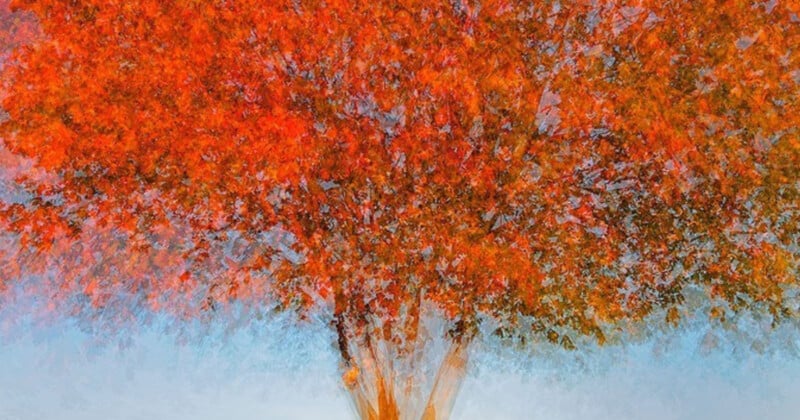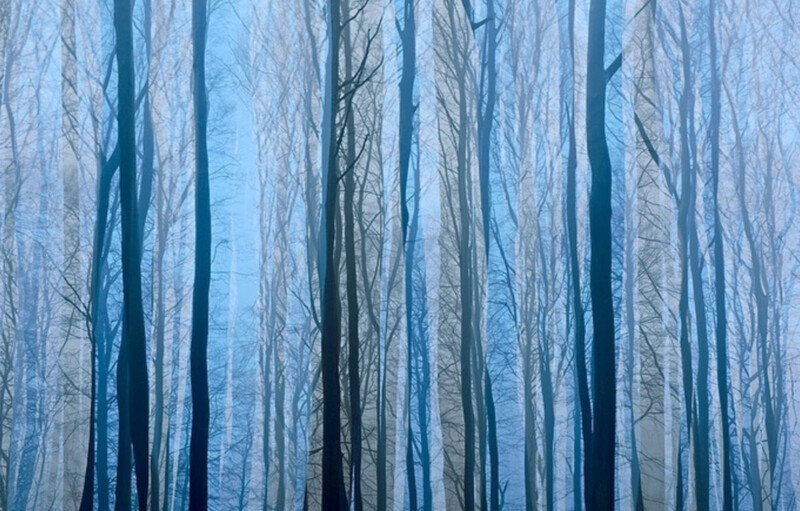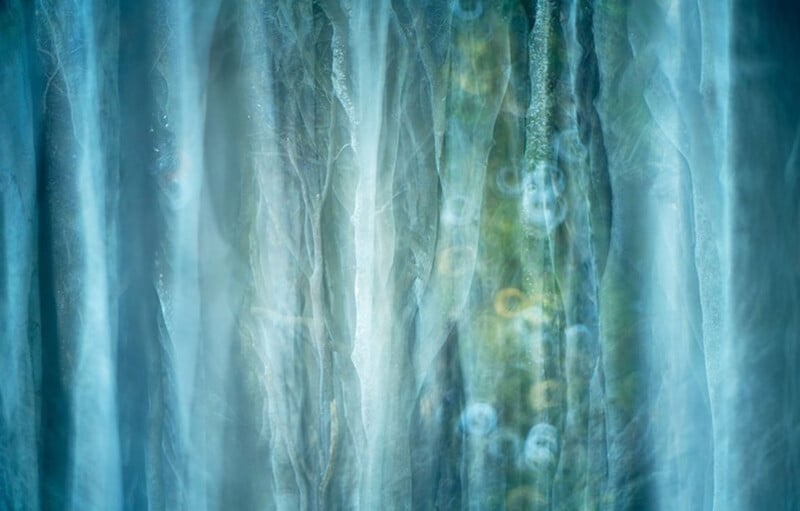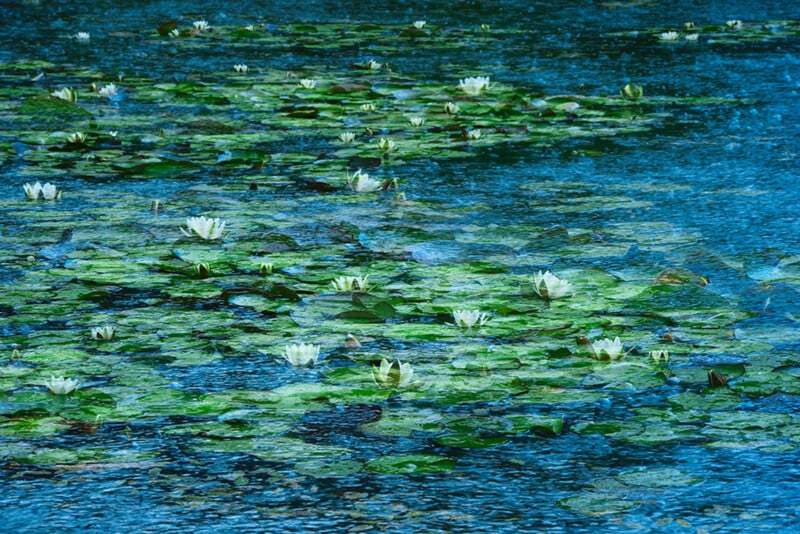Photographer Begs Nikon to Add Multiple Exposure RAW Capture Back

Fine art photographer Sandra Bartocha is an expert with multiple exposure techniques. For some reason, Nikon Z cameras are significantly worse for multiple exposure photography than Nikon’s DSLR cameras to the degree that Bartocha has started a petition in hopes of encouraging Nikon to address the problem.
For a long time, Nikon DSLR cameras allowed photographers to use in-camera multiple exposure mode and save the composite image as a full-resolution RAW image. Nikon Z mirrorless cameras have removed this option, forcing photographers to save the output as an 8-bit JPEG image.
“For as long as cameras have existed, photographers have been able to use multiple exposures to create creative images. The combination of imagery, the overlay of structures, the fascinating addition of different elements of the image are important tools in artistic photography. This has always been possible in both analog and digital photography with SLR cameras,” explains Bartocha in her Change.org petition.
While multiple exposure photography is admittedly a niche photography specialty, it maintains a small but enthusiastic group of supporters. Bartocha’s petition has reached nearly 630 signatures at the time of publication, with over 140 people having signed it just today.
Why Did Nikon Change the Feature for Mirrorless Cameras?
Nikon digital SLR cameras since at least the D200 allowed photographers to capture multiple exposure RAW images. That spans many APS-C and full-frame cameras with diverse image sensors. Why did Nikon remove this feature from mirrorless cameras?
PetaPixel contacted Nikon for comment and its Nikon’s official stance on the matter is as follows:
While we can’t comment on future releases, we will always consider customer feedback for development of products and features.
PetaPixel asked Nikon why the ability to capture multiple exposure photos in RAW format has been removed from Z cameras, but Nikon did directly respond.

What Can Nikon Z Cameras do for Photographers Like Bartocha?
Speaking to PetaPixel, Bartocha explains that with the Z6 and Z7 cameras, there is a workaround that allows photographers to save the output file as a 16-bit TIFF, which she says “is still not the best solution, as you constantly need the file format when shooting.” However, she adds that Nikon has removed this workaround with the Z8 and Z9.
Save for that tedious workaround, the only option photographers have when using the multiple exposure mode on Z cameras is to save the composite output image as an 8-bit JPEG file. Individual photos that comprise the composite can be saved as RAW files, which is nice, but ideally, photographers could save the output as a RAW file as was possible before.
Why Not Use Photoshop?
Many people, especially those who are not multiple-exposure artists themselves, may wonder what the problem is. Why not just Photoshop and combine RAW files?
“The argument that those single RAW files are easily combined with Photoshop isn’t so easy either,” Bartocha tells PetaPixel. “As I understand multiple exposures, two underexposed frames would be layered as negative multiply to form a correct exposure.”

“Photoshop might work for two or three files, but I don’t get how you would do 10. At least, I’m missing proof so far. Either way, I would like to spare that time in just getting the option back, which has never been a problem before,” Bartocha adds.
“The argument that images can also be combined in post-processing on the computer misses the spontaneous and creative moment that photographers around the world value when using this function. It is not about the nostalgic simulation of a function from analog times that has long since become redundant, but about the creative process at the photo location, the magic of trial and error, and the exciting momentum of coincidence that stands in contrast to the perfectly arranged composing on the computer. It is therefore about the magic of photography itself,” Bartocha explains in her petition.
This is an important point, because even if Photoshop were a perfect substitute from a functionality perspective, which Bartocha thinks it isn’t, post-processing will never be able to replicate the workflows that in-camera processing features enable. As evidenced by popular cameras with retro-inspired styling and many dials, which are arguably slower than custom function buttons for adjusting settings, photographers care about the “experience” of photography a lot, sometimes even more than the results themselves.
The multiple exposure mode in Nikon cameras allows photographers to choose between three overlay modes: add, average, lighten, and darken.
In the add mode, exposures are overlaid without modification and gain is not adjusted. In the average mode, gain is adjusted before exposures are overlaid, and the gain for each exposure is equal to one divided by the total number of exposures taken. Rounding out the modes, the camera compares pixels in each image and uses only the brightest in the lighten overlay mode. Unsurprisingly, the darken mode is the opposite — only the darkest pixels are used.
During the shooting, combinations, and creations emerge that reflect the emotion of a location or the feelings of a fleeting moment. Moods that cannot easily be reproduced on the computer. On location, the possible options can also be better assessed and further developed, which contributes significantly to the coherent final result.
Is There an Inherent Limitation in Mirrorless Cameras?
While Nikon itself did not explain why its mirrorless cameras have omitted a feature that was long available in Nikon DSLR cameras, photographers do not seem to have much by way of explanation either.
“It is unclear why Nikon only saves multi-exposures as JPEGs in the mirrorless cameras. The decision to do this seems completely arbitrary,” Bartocha says.
It does seem that Nikon’s cameras are certainly powerful enough to deliver her requested feature. Nikon Professional Services in Germany, where Bartocha lives, tells her that they have no explanation either, as they believe that Nikon’s Z cameras should be capable of offering the feature.
To Canon’s credit, as Bartocha points out, some Canon EOS R-series mirrorless cameras can save multiple exposure composites as RAW files. For example, the popular Canon EOS R5 and R6 cameras can do it.
However, the Canon EOS R6 Mark II cannot. Some people speculate that it has something to do with extensive in-camera lens corrections applied in mirrorless cameras. However, if that is the case, that should have also been true of the R5 and R6.
However, to add some weight to this explanation, when using the multiple exposure feature on Canon cameras, some lenses prevent the mode from being used, according to Bartocha.
PetaPixel also reached out to Canon to comment on this story, even though the petition concerns Nikon Z cameras. Canon USA’s substantive response is as follows:
It’s true some previous cameras were able to capture multi-exposure in camera in RAW with some lens restrictions (not all lenses were supported). However, with the new models such as the EOS R6 Mark II, this feature only allows for JPEG capture. In order to support some of the EOS R6 Mark II’s improvements, this feature for multi-exposure capture in RAW could not be achieved. Canon recognizes it’s a requested feature and will continue to listen to the valuable feedback customers provide.
So, lenses do seem to be involved, but it is not clear specifically which Canon EOS R6 II feature prevents the availability of in-camera multiple exposure RAW images.
Next Steps and Hopes for the Future of Multiple Exposure Photography in the Mirrorless Age
“Multiple exposures taken in-camera are as such a very niche thing. It is primarily used by photographers as a creative tool. They want to do it in the field and the want to have a high-quality file, that allows for further adjustments, printing, etc. Many ICM photographers use it,” Bartocha says.
Again, this is not some throwaway feature, even if that is precisely how Nikon treated it in the transition to mirrorless. Bartocha says that she had heard from some photographers that they are not upgrading to a mirrorless camera because of this issue. She knows of others who have switched to Canon — although that move could backfire if future cameras go the way of the R6 II. She has also heard about people who want Nikon’s exciting Z cameras, but will not buy one because this feature is unavailable.
While these are anecdotal reports and not full-fledged surveys, they hit on something important.

It is a feature that people want, it is a feature that was previously available, and there is no obvious reason why it cannot be brought back.
As Nikon tells PetaPixel, the company listens to customer feedback. Through firmware updates, Nikon has delivered many significant improvements and new features to existing Z cameras. In some cases, the changes are vast. Perhaps this is another instance where Nikon can cater to its customers and add — or bring back, in this case — a requested feature.
Photographers interested in joining Bartocha’s cause can sign up on Change.org. It is important that people’s voices are heard and it does seem like Nikon is listening.
Image credits: All images © Sandra Bartocha